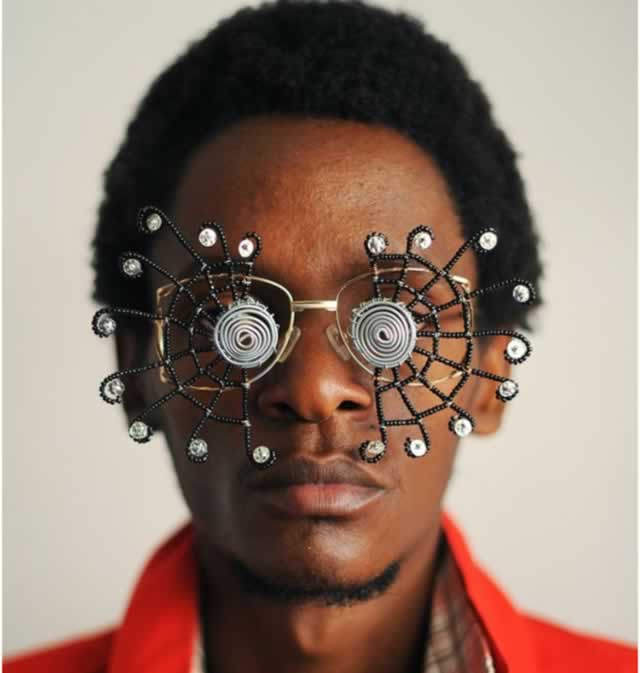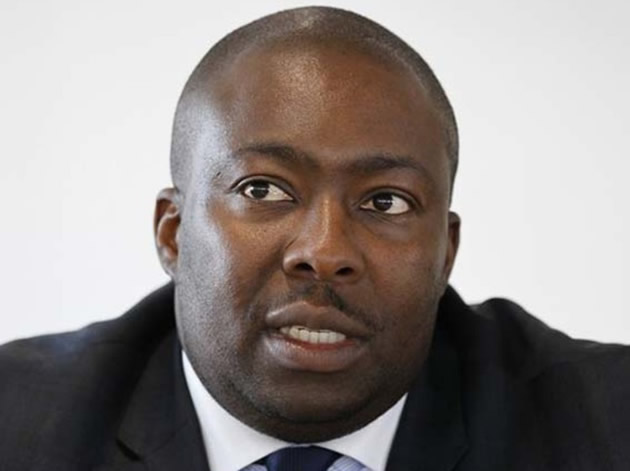African art under spotlight in Europe

Knowledge Mushowe Art Zone
A new art exhibition by a young breed of African artists has opened in Guggenheim Museum in Bilbao, Spain.
The exhibition showcases the work of about a hundred and 20 artists and designers and expresses new perspectives about the African continent.
Among the artworks on show are illustrations, graphic arts, fashion illustrations and artifacts, architecture, craft, film and photography.
According to the information posted on the museum website, the works on show demonstrate the political, economic, social, cultural and technological transformation of the continent through multidisciplinary and innovative solutions.
Among the works on show is a photograph by a Senegalese artist Omar Victor Diop.
His depiction of performing artist, Mame-Diarra Niang has an aura of exoticness to it, yet the different shades of blue and the intricate ceramic-like blocks seemingly inspired by Greek art enveloping the artist give the photograph a sense of movement.
In contrast, Mozambican photographer Mario Macilau aimed to capture the hip youth of his country’s capital, Maputo.
As well as portraying contemporary fashion the pictures also refer back to the heyday of African studio photography, particularly one black and white photograph showing a young, fashionable man in front of a floral background and clad in what appears to be 1960s clothing that include large glasses and cross belts.
Even though the photograph is in black and white, the young man’s pose and charisma add a lot of ‘colour’ to the photograph.
The exhibition presents Africa as a hub of experimentation generating new approaches and solutions of worldwide relevance and as a driving force for a new discussion about the potential of design in the twenty-first century.
A print imaging artwork by Nigerian tailors Ikire Jones that forms part of the exhibition epitomises this.
The work depicts a future setting of the country’s commercial capital, Lagos with an inscription that says, “Lagos 2081AD”.
The artwork shows images of the future, with taller and thinner skyscrapers dominating the skyline.
The artist chose to use his imagination to paint a busy and exotic scene from the future.
It is because of Jones’ work that the museum says one of the objectives of the exhibition was to provide concrete answers to the question of what twenty-first century design can and should achieve.
The exhibition presents Africa as a hub of experimentation generating new approaches and solutions of worldwide relevance and as a driving force for a new discussion about the potential of design in the twenty-first century.
These contemporary creations forge a link to the middle of the twentieth century, when a young generation celebrated its liberation from colonialism by asserting its place in the world and its right to a promising future.
The exhibition does not strive to present a complete picture of design in Africa, an impossible task due to the size, complexity, and diversity of a continent with 54 nations, more than 2,000 languages and cultures, and a billion inhabitants.
Instead, it offers snippets of African visual expression that is inspired not only by Africa and its people, but by life and the lived experience from anywhere.
Kenyan artist Cyrus Kabiru, much like other African artists such as our own Munyaradzi Mazarire and Tafadzwa Gwetai, creates items out of discarded objects.
He has made a series of wearable spectacle sculptures to challenge the way we look at things — as a reference to how Africa can often be perceived in a negative light.
Kabiru’s work mirrors some artworks by Zimbabwean artist Gareth Nyandoro who has in the past developed spectacles using found objects.
The exhibition shows a combination of artworks by a cluster of African artists in a Spanish museum.
If it achieves its goals, it may go a long way in correcting the image of Africa as a ‘dark continent’ with nothing but hunger, war and disease.
The exportation of African art at some level is good for the continent and the artists as it dispels some misconceptions and in the process give the creators an ideal platform to earn both fame and fortune.
However, if history is to repeat itself, the dangers of exploitation are real.
African artists should obviously be happy to be presented a platform at a prestigious museum in Europe but they should also ensure that their work is presented, marketed and sold by their own terms.
Now is the time for African art to make a mark without being pushed or pulled by some foreign forces.










Comments